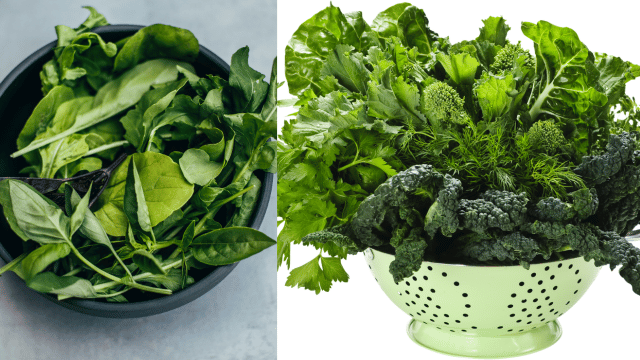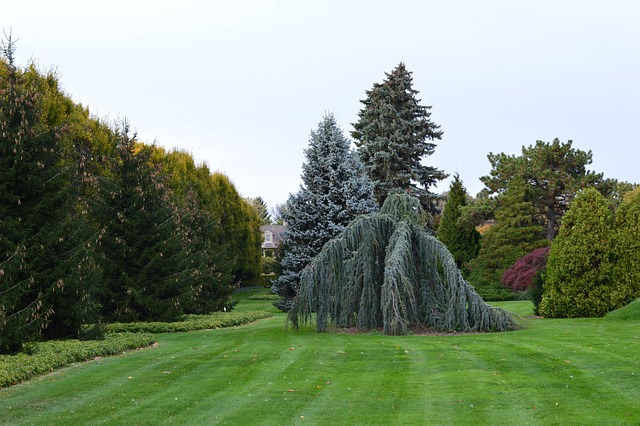There’s nothing more rewarding than growing your own leafy greens in a garden. They are very healthy and can be used in many different dishes. They also add a splash of bright color to your yard. This complete guide will teach you everything you need to know to grow lush, leafy greens in your garden, no matter how much experience you have or how new you are to gardening.
Benefits of growing your own leafy greens
There are many good reasons to grow your own fresh greens. In the first place, it gives you full power over the quality of your food. You can be sure that your fresh greens were grown without using chemicals or pesticides that are bad for you. This means that the food you and your family eat is healthier and safer. Leafy greens are also very healthy, and growing your own is a cheap way to get them. Instead of going to the store to buy them, you can just go outside and pick fresh greens whenever you need them.
Types of leafy greens to grow in your garden
In your yard, you can grow a huge range of different leafy greens. Lettuce, spinach, kale, Swiss chard, and greens are all common choices. Each of these veggies tastes different and has different health benefits. As an example, lettuce is a green that can be used in many different ways. It can be added to salads, sandwiches, and wraps. Spinach is full of iron and can be eaten raw or cooked. Kale is great for making filling soups or sautéing with garlic because it has a lot of vitamins and minerals. Try out different kinds of fresh greens until you find the ones you like best.
Choosing the right location for your garden
Putting your garden in the right place is very important for growing your fresh veggies. Find a spot in your yard that gets at least six hours of straight sunshine every day. Most fresh greens do best in full sun. It’s also important to think about the land where you want to plant. Leafy greens do best in dirt that drains well and has a lot of organic matter. If your soil feels heavy or like clay, you might want to add compost or other organic matter to make it run better and be more fertile.
Preparing the soil for leafy greens
It’s important to prepare the dirt correctly before planting your leafy greens. First, clear the area of any grass or weeds. You can use a yard tool or do this by hand. It’s time to clear the area. Use a garden fork or plow to break up the dirt at least six inches deep. To make the soil better, do this. This will make it easier for the roots of your leafy greens to get into the soil. Lastly, add organic matter to the soil, like compost or well-rotted dung, to make it more fertile and give your plants the nutrients they need.
Planting techniques for leafy greens
After growing fresh greens, there are a few things you can do to make sure they grow well. First, space your plants out so that they get the space they need. Larger greens like kale and Swiss chard need about 12 to 18 inches of space between them. Leafy greens like lettuce and spinach should be about 6 to 8 inches apart. Make a small hole for each plant and carefully put the seedling or transplant in it. Make sure the dirt covers the roots all the way to the top. Finally, give your newly planted veggies a lot of water to help their roots grow.
Proper watering and irrigation for leafy greens
Leafy greens need to be watered properly to stay healthy and strong. These veggies have weak roots that dry out quickly if they don’t get enough water. To keep your fresh veggies healthy, you should water them deeply and often. Aim for about an inch of water per week, which can come from rain or irrigation. To keep your veggies healthy, water them in the morning so the leaves have time to dry out before it gets cooler in the evening. Do not water from above, as this can make fungal diseases more likely. To get water directly to the soil, use a soaker hose or a drip watering method instead.
Natural pest control methods for leafy greens
Getting rid of bugs is one of the hardest parts of growing fresh greens. Some natural ways to get rid of pests, on the other hand, can help protect your plants without using dangerous drugs. Getting good bugs like ladybugs and lacewings to come to your yard is one way that works. Aphids, caterpillars, and other common pests are eaten by these bugs, which helps keep their numbers in check. Planting flowers that give off nectar and pollen, like marigolds and alyssum, near your fresh greens can bring in good bugs. Putting row covers or nets over your plants to keep pests out is another natural way to get rid of bugs. While still letting light and water through, these covers make a barrier that bugs can’t get through to your veggies.
Harvesting and storing leafy greens
When you should pick your fresh greens will depend on the type of green you are growing. You can pick most fresh greens when they are the right size for what you want to do with them. In this case, the leaves of the cabbage and spinach should be big enough to pick but still soft. The upper leaves of kale and Swiss chard can be taken off to let the inner leaves continue to grow. Wash your fresh greens gently to get rid of any dirt or other things that might be on them, and then dry them completely. Put the greens in a plastic bag or container that has been stuffed with paper towels to soak up any extra water. They will stay fresh for up to a week if you put them in the fridge.
Troubleshooting common leafy green problems
Even though growing leafy veggies is usually pretty easy, there are a few common issues that you might run into. One of the most common problems is bolting, which happens when the plant blooms and seeds too soon. Bolting is often caused by dry conditions or high temperatures, so make sure your plants get enough water and shade when it’s hot outside. Plants that are leafy greens can also get diseases like powdery mildew and downy mildew. To keep these diseases from spreading, don’t water your plants from above and make sure there is plenty of air flow around them. If you see signs of disease, get rid of the leaves or plants that are sick right away to stop the disease from spreading.
Resources and tools for growing leafy greens
There are a number of resources and tools that may be useful to you as you try to grow lush leafy veggies. Most gardening shops and nurseries in your area have knowledgeable staff who can help you grow certain kinds of greens. Online gardening groups and forums are also great places to meet other gardeners and get tips from them. In addition, there are a lot of veggie gardening books and websites that have detailed information on how to grow leafy greens. Finally, buying basic gardening tools like a garden fork, shovel, and watering can will help you get your work done faster and better.


